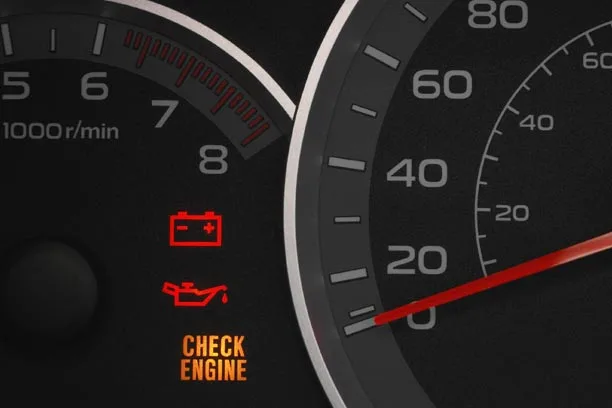Do You Know What Your Car Warning Lights Mean?


Some of the little lights on your dashboard give you information that can help you drive but aren’t worrisome. Others mean your car needs your attention right away. This guide can help you understand those car dashboard symbols and meanings.
First, when you start your car, you’ll briefly see all the dashboard lights illuminated. That’s nothing to worry about — that’s normal. But if one of the car warning lights doesn’t turn off after a second or two, or if they come on when you’re driving, you’ll want to understand what they’re telling you.
Here are some of the most common symbols you might see, along with the car light meanings.
This check engine warning light usually looks like an orange engine, and it tells you that something is wrong with the car’s motor or emissions system. Unfortunately, this could mean a wide range of problems that could mean anything from a loose gas cap to serious engine trouble.
What you should do: If this light comes on while you’re driving and everything seems fine, you should see a mechanic and have the issue diagnosed. You may need to pull over and get your car towed if the light is blinking or your car doesn’t feel like it’s driving correctly. You could be at risk for a dangerous or expensive problem.
The coolant temperature warning light may look like a blue thermometer in water. It means your engine is running too hot, and the problems that can cause a hot engine can get expensive if you don’t take care of them.
What you should do: Pull over. If you can’t pull over safely, turn off the air conditioner, turn on the heat and pull over as soon as possible. You might be tempted to wait for the engine to cool and then continue driving, but you could cause serious damage. It’s a better idea to call for a tow.
The transmission temperature warning light often looks like a yellow thermometer inside a gear. It means your transmission is getting too hot.
What you should do: Stop driving and call for a tow. (If you’re towing something yourself, make sure you’re not over the weight limit for your vehicle.)
The oil pressure warning light looks like a red oil can and tells you that your oil level is low.
What you should do: Add oil. If the light goes off and stays off afterward, your car was probably just getting low on oil. If the light comes back on soon after, get it checked. Something else is probably wrong and ignoring it could cause further damage to your car.
With the tire pressure warning light, you’ll see a yellow exclamation point inside a flat tire, indicating that the pressure in one or multiple of your tires is off.
What you should do: Inflate all your tires to the proper level. The recommended pressure level is often indicated on the tire itself. If the light doesn’t come back on afterward, you should be fine. If it does, get the tire checked for a leak.
Sometimes, the first cold days in a season trigger the tire pressure monitor for all four tires. If that’s the case and your car is driving fine, the system should adjust to the weather in a few days.
The brake system warning light also includes an exclamation point, usually inside a red circle and what looks like parenthesis. It means something is wrong with your brakes.
What you should do: Make sure your parking brake isn’t engaged. If it’s not, there’s another problem. You may be able to drive, but make sure you go slowly and give yourself plenty of room to stop. Get to a mechanic as soon as you can to diagnose and correct the problem.
Your car may have dashboard lights that alert you to other issues that are generally easy to understand and address:
Along with addressing any issues that pop up with your dashboard lights, you’ll want to make sure you have auto insurance that gives you the coverage you need. A Farm Bureau agent can review your policies and suggest changes that protect you and your vehicle. Reach out for more information today.